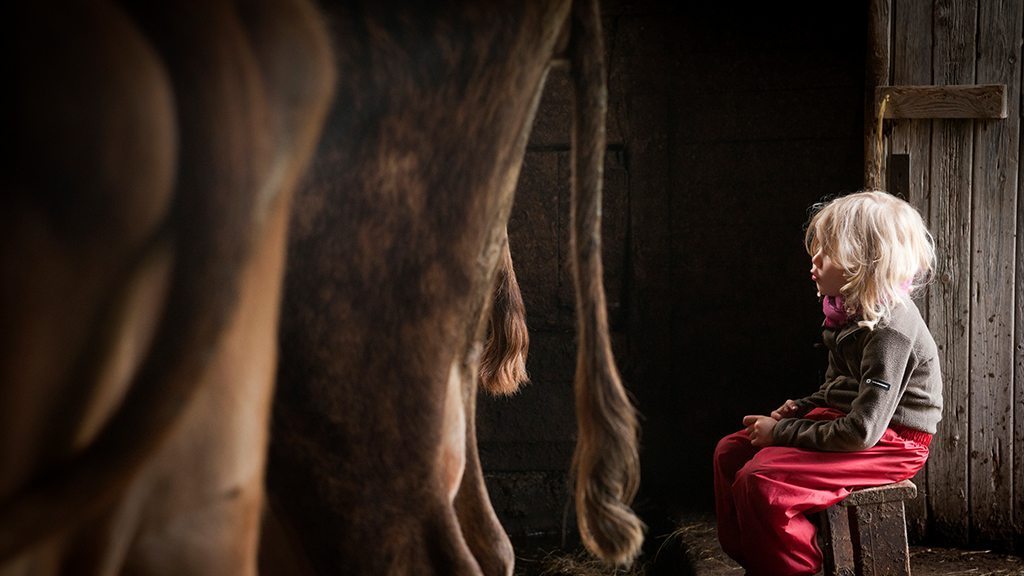Cattle

Originally cattle was brought from Norway during the settlement of Iceland in the 10th century. Icelandic dairy cattle have been kept as a pure breed since the colonization of Iceland between the years 800 and 1000. Cattle were relatively common in the settlement period and whole milk was likely consumed more than it is now. After the middle ages Icelanders did not drink whole milk on a regular basis.
Only in the late-1900s were breeds like Angus, Galloway and Limousine imported for use in meat production. Import conditions have been very strict, and there has been no crossbreeding with the dairy cow, which is still a genetic legacy, one of the oldest pure breeds in Europe.
Scientifically based information is available indicating that certain milk constituents in Icelandic dairy cows differ from those of milk in other Nordic countries. The favorable protein composition of the milk is said to contribute to better cheese-making qualities. Skyr, a thick, creamy yoghurt is unique to the country. It has been a natural part of the Icelandic diet since the Vikings settled. It is made from skim milk and is high in protein and naturally fat free.
The Icelandic cattle are hardy animals, well adapted to grazing and feeding on a high roughage diet. It is compulsory by law to let the cattle graze for at least 8 weeks in the summer time. Cattle farming in Iceland has undergone many changes in recent years. There are fewer but larger, cattle farms now. Development and technological advancement have increased the production capacity of the Icelandic dairy cows.
If you are dining out in Iceland ask for an Icelandic beef steak and try a skyr dessert!